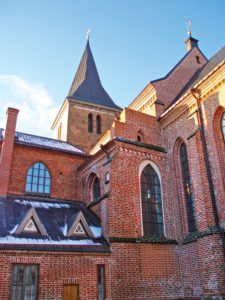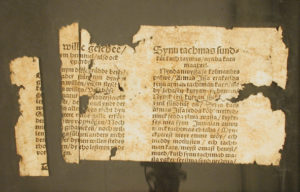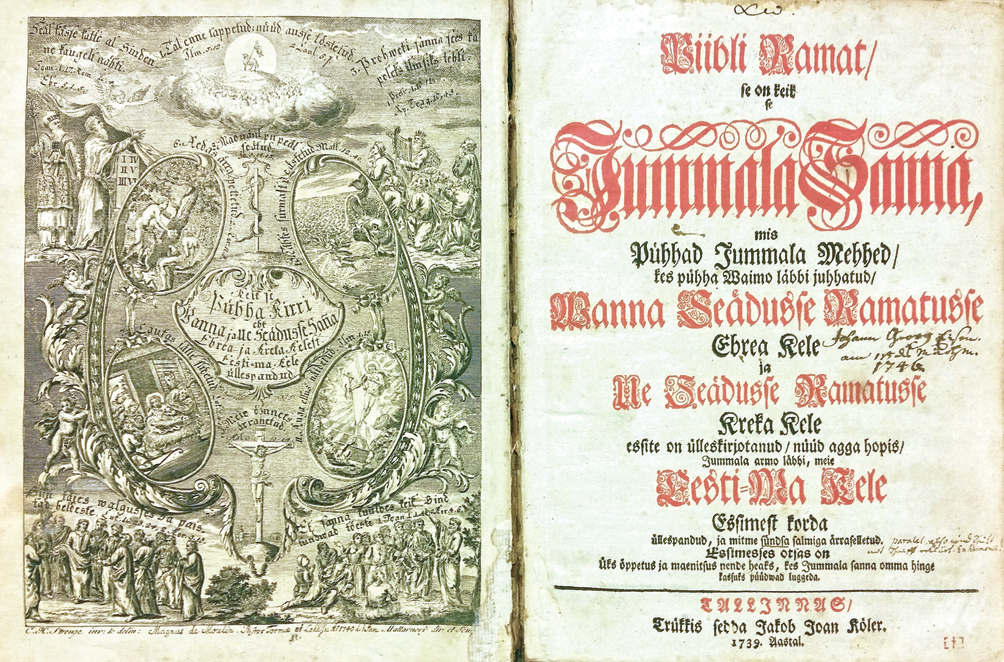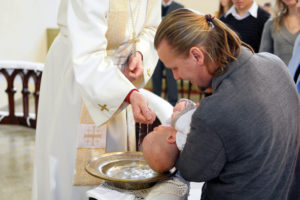REFORMATION
Ecclesia semper reformanda • The church is always to be reformed
The principle of reforming the church has been valid throughout its history. In the 15th and 16th century Europe experienced another reform movement.
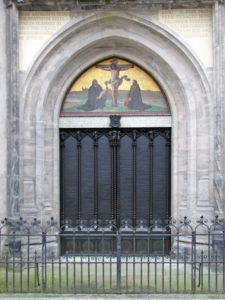
Caption: Since 1858, the doors of the Castle Church in Wittenberg are decorated with the disputation theses, cast in bronze. Photo: private collection
In 1517, German monk and professor of theology Martin Luther published his first writings, including the widely known disputation against indulgences, or letters of remission. According to the legend he posted his 95 Theses concerning the same topic on the door of the Castle Church in Wittenberg, which was then used as a notice-board of the university hall. The Reformation was an attempt to return to the roots of Christianity by re-establishing the divine order, which had been abandoned in the meantime.
Luther’s goal, when expressing his positions, was not the establishment of a new church, but it happened nevertheless due to his excommunication. In the debate concerning Luther’s opinions he declared in 1519 that he would not recognise the Pope’s supremacy or the infallibility of church councils, which had been previously regarded as the pillars of church doctrine. Instead, he proclaimed the Scriptures, the Bible, as the highest religious authority. The Reformation movement grew and expanded into neighbouring countries, resulting in the emergence of Calvinist, Zwinglian and other reformed churches in addition to the Lutheran churches.
The ideas of the Reformation, which were significantly shaped by Luther’s colleague and follower Philipp Melanchton, spread to the Central Europe, Scandinavia and the Baltic region as early as in the 1520s, mainly through Luther’s students and printed publications. The Pe
ace of Augsburg of 1555 granted each prince the right to choose a religion for himself and his subjects and established the principle Cuius regio, eius religio – whose realm, his religion. This gave Lutheranism the right to exist alongside Catholicism.
The doctrine of the Lutheran church is based on the Bible and the ecumenical creeds – the Niceno-Constantinopolitan Creed, the Athanasian Creed and the Apostles’ Creed. In addition, the doctrine is also based on the Lutheran confessions, written in the 16th century, in particular the Augsburg Confession (1530) and the Large and Small Catechisms of Martin Luther (1529).
REFORMERS
Martin Luther
(1483–1546), reformer
- Born on 10 November 1483 in Eisleben
- When his friend died from a lightning bolt on 2 July 1505, Luther decided to become an Augustinian monk
- He studied theology at the universities of Erfurt and Wittenberg
- In 1512 he was awarded Doctor of Theology in Wittenberg and became a professor of Biblical studies
- 31 October 1517 – publication of the 95 Theses against indulgences
- 6 March 1521 – Edict of Worms in which Emperor Charles V declared Luther an outlaw, ordered his arrest and banned publication of his writings
- 1522 – completion of the German translation of the New Testament
- 1525 – marriage to Katharina von Bora, a former nun
- 1530 – formulation of the Augsburg Confession as the foundation of Protestant self-understanding
- 1534 – publication of the complete Bible translation, the ‘Luther’s Bible’, which also contributed to the development of a single German language
- Luther died on 14 February 1546 in his birthplace Eisleben and was buried in the Castle Church in Wittenberg on 22 February
Philipp Melanchthon
(1497–1560), German humanist
- Born on 15 February 1497 in Bretten
- Classical education – ancient philosophy, dialectic, rhetoric, old languages – at the universities of Heidelberg (1511) and Tübingen (1514)
- In 1518 he became professor of the Greek language at the University of Wittenberg
- Reformer of education, incl. author of a textbook on learning to read
- Published important doctrinal texts, incl. formulation of the Augsburg Confession (1530)
- Guided the course of the Reformation after Luther’s death
- Died on 19 April 1560 in Wittenberg
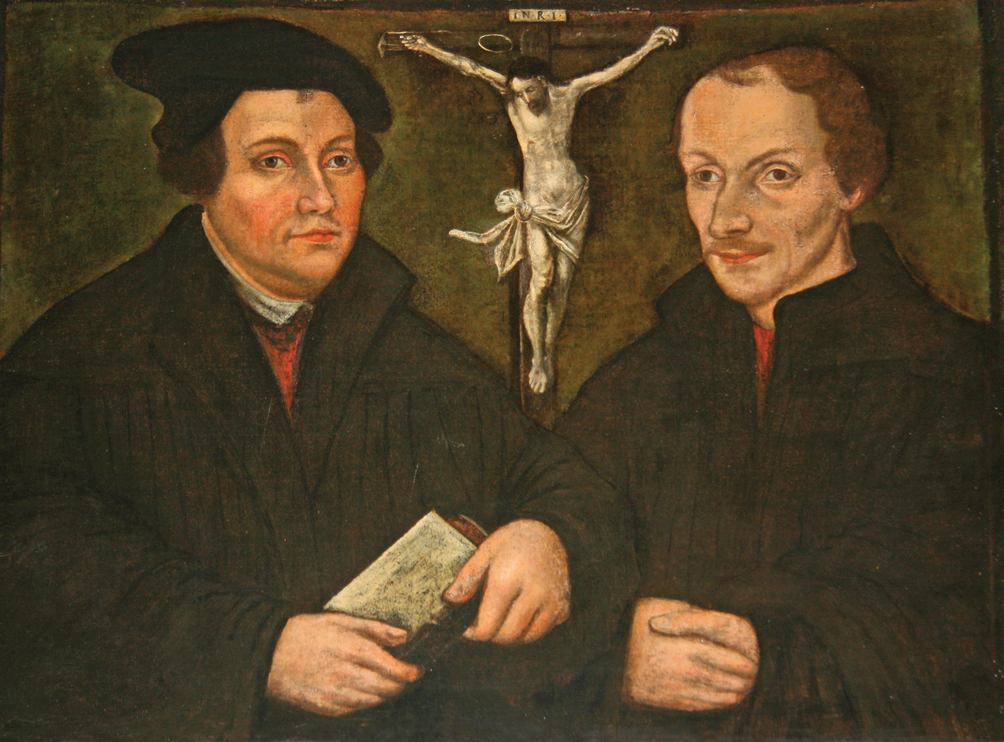
Caption: Double portrait of reformers Luthern and Melanchton from the end of the 16th century in the Holy Spirit Church, Tallinn Photo: Arho Tuhkru
THE REFORMATION IN LIVONIA AND ESTONIA
Luther’s ideas and the Reformation movement reached the larger cities of Old Livonia as early as in the beginning of the 1520s – Riga in 1521, Tallinn in 1523, Tartu in 1524. From there it spread on to Viljandi (1525), New Pärnu (1526) and Valka (1532). However, the rural population became acquainted with the ideas of Reformation only after the end of the Livonian War (1558–1583). In Tallinn, the movement started a little after Riga but its development was faster.
RIGA. The first reformer in Livonia was probably Andreas Knopken, who served as a chaplain at the St. Peter’s Church in Riga from 1517 to 1519. When he visited Germany in 1520, he became a supporter of Luther’s teaching. Having returned to Riga in 1521, he started giving Bible lessons. In the autumn of the next year, the Riga City Council appointed Knopken, a level-headed reformer, as the first evangelical pastor of the St. Peter’s Church in Riga.
TARTU. Luther’s student Hermann Marsow started his work in Tartu in the beginning of 1524. Being an eloquent speaker, he won the support of the citizens and the town council appointed him as a preacher at St. Mary’s Church.
Travelling furrier Melchior Hoffmann from Germany, who had learned about Luther’s ideas, came to Tartu in the autumn of 1524. Having no special education, the man preached about the Judgment Day and God’s trial, calling for repentance and renewal in teaching, life and general conditions. The local bishop demanded Hoffmann’s arrest, but the people interfered by rushing into St. Mary’s Church in January 1525 to protect Hoffmann. As a sign of protest, they tore down the holy images and sculptures from the walls and burned them on the marketplace. St. John’s Church, the Dome Church and monasteries also suffered from iconoclasm.
In order to calm the situation, Reformation-supporting preacher Sylvester Tegetmeyer was called to Tartu from Riga. The Estonians were also granted the right to use St. John’s Church. The Dome Church and the Bishop’s Castle were not subordinated to the Tartu Town Council, which is why masses were celebrated there until the onset of the Livonian War in 1558.
In essence, the Reformation replaced the former church in our country with a new one. The process was completed in 1645 with the establishment of Swedish rule on the entire Estonian territory. This was the end of the ‘Catholic’ era and the beginning of the ‘Lutheran’ era.
THE REFORMATION IN TALLINN

Caption: Theodor Albert Sprengel, 1869. Reception of Johann Lange, the first Lutheran preacher, by the Tallinn Magistrate in 1523. Lunette painting from the Great Guild building. Photo: Arho Tuhkru
The first Reformers to arrive in Tallinn from Germany in 1523 included former monk Johann Lange, who started preaching in St. Nicholas’ Church, and chaplain Zacharias Hasse, who worked at St Olaf’s Church. St. Olaf’s Church was under the patronage of St. Michael’s Cistercian Convent but despite their opposition, Hasse became a preacher at St. Olaf’s in 1524. Lange started preaching in St. Nicholas’ without permission.
The new preachers opposed the Catholic clergy and monks. This created agitation and strife in the city. The city council tried to resolve the conflict through a religious dispute, but the Dominicans did not agree. Then the city council, supporting the reformers, decided to grant the new preachers the right to proclaim the Word of God in the church of the St Catherine’s Convent.
The city authorities started to demand from the Dominicans an inventory of assets and transfer of convent assets to the city council. For this reason, the monks of the convent asked Wolter von Plettenberg, Master of the Order, for help. The Master of the Order responded by sending a letter of admonishment, which irritated the reformers and set off a similar church pillage as in Riga on the Holy Cross Day, the 14 September 1524. The crowd mocked, destroyed and dragged away holy items, first from the church of St. Catherine’s Convent and then from the churches of the Holy Spirit and St. Olaf’s. The warden of St. Nicholas’ Church had the foresight to solder the church doors, which saved the art treasures there. The Cathedral, St. Anthony’s and St. Michael’s Convent Church were also not touched.
In the next day, the city council ordered the stolen items to be returned to churches. The Estonians in Tallinn were granted the right to establish their own parish, which started to hold services in the former church of St. Catherine’s Convent. Estonian sub-parishes also continued at St. Olaf’s and St. Nicholas’ churches. From now on the city magistrate had the supremacy over the church. Protected by Harju-Viru vassals, Toompea with its chapter and the Cathedral remained Catholic until 1561.
EDUCATION AND WRITTEN WORD IN ESTONIAN
The Reformation started the process of distribution of religious literature in the cities and rural areas and promoting public education in Estonian language became one of the priorities of the Lutheran church. Several men who had attained academic education at the University of Wittenberg started to reorganise education in Tallinn.
The reformers considered it important to send young men from the local population to schools and universities. In his Letter to the Mayors and Aldermen of all the Cities of Germany (1524), Luther encouraged local authorities to establish schools, incl. girls’ schools, in the cities to make sure that children can go to school, and recommended that cities provide financial support to schools.
Luther’s colleague Philipp Melanchthon was, in addition to reforming the church, also involved in the renewal of the education system and developed the school programme for religious education in native language. The programme included the requirement to learn prayers, the Lord’s Prayer, the Ten Commandments and Luther’s explanations by heart, as well as knowledge of hymns and reading skills.
The Lutheran catechism of Wanradt-Koell was published in 1535 with parallel texts in Low German and Estonian. The Tallinn City Council ordered it to be destroyed, because it arguably included faulty interpretations of Lutheran theology. The fragments of this book represent the oldest publication that includes texts in Estonian. This was the start of printed word in Estonian language, which was mainly dedicated to religious topics in the first centuries after the Reformation.
In 1552, St. Olaf’s Church in Tallinn opened a library, which laid the groundwork for the first public library of Tallinn.
LUTHERAN CHURCH AS PART OF DAILY LIFE
Following the Christianisation of Estonian territory, church became a part of daily life of the local rural population. The Reformation further strengthened the church’s role in local life, with several social and family ceremonies being performed by the church. The church accompanied people as a support mechanism from birth to death. All vital statistics were recorded in church registers. This is why the historical church registers are now irreplaceable sources for researchers of local and family histories.
Baptism is the first sacrament of the Lutheran church, through which a person is admitted to the church. In baptism a person receives a name and, historically, the entry of baptism in a church register was equivalent to a population register record.
Confirmation is the affirmation of baptism and officially bestows membership in a congregation. Historically, it signified the end of childhood and entry into adulthood. A person who had completed confirmation school was supposed to know the Small Catechism of Martin Luther and to be able to read.
Eucharist is the second sacrament of the Lutheran church. In the Eucharist, a person receives Christ’s body and blood in the form of bread and wine, bestowing forgiveness of sins. Everyone who is baptised and has received confirmation can participate in the Eucharist.
Holy matrimony is entry into Christian marriage by praying to God to bless and support this union. Historically, it is another stage in human life – marriage created a new family, the pillar of society.
Funeral is an integral part of human life. In a Christian funeral, the focus is on acknowledging death and loss and praying for the deceased and the mourners. There are different funeral traditions and rites in different regions of Estonia – blessing the coffin, funeral service at home, etc.
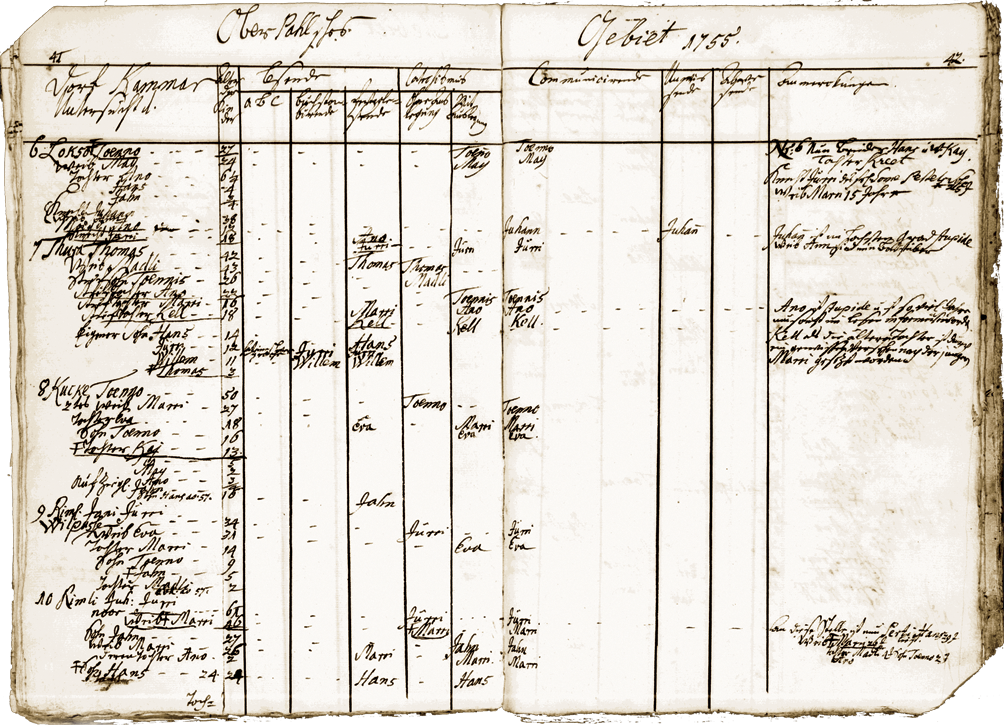
Caption: Personal register of Põltsamaa parish, 1755. Archives of the EELC St. Nicholas’ Church of Põltsamaa
THE EELC TODAY
The Estonian Evangelical Lutheran Church (EELC) has grown out of the Reformation of the 16th century. The name ‘Evangelical’ emphasises Luther’s notion of Christianity, which focuses on the gospel of a gracious God, not on the Law, moral norms or Christian traditions.
The autonomous Estonian Evangelical Lutheran Church was born as a result of the first church congress in 1917 when the Lutheran church of this country was reorganised as a free people’s church.
The church has helped to develop Estonian culture, education and language. Clergy members Jakob Hurt, Villem Reiman and many other pastors, parish clerks and schoolmasters have contributed to the preservation of national heritage and creation of independent statehood.
The Lutheran church includes 167 congregations. About 11% of Estonian population are members of the church. The church is governed by the Archbishop, bishops, the Chancellor and assessors. The General Synod serves as the highest legislative body of the church. The EELC has more than 220 clergy members. The church has also created chaplaincy services in the Defence Forces, the police, prisons and hospitals. In addition to Estonia, the church has congregations and preaching stations in other countries, constituting the Estonian Diocese Abroad. The EELC is a member of the Estonian Council of Churches, the World Council of Churches, the Lutheran World Federation and many other international organisations.
The church has its own educational institution, the Theological Institute, founded in 1946. The church’s newspaper “Eesti Kirik” is published once a week. Different areas of work are overseen by the Department for Diaconal Work of the EELC Consistory, the Association for Work with Children and Youth, the Mission Centre and the Church Music Association. Family centres in Tallinn and Tartu provide family counselling. People with severe health problems are cared for in the Tallinn Diaconal Hospital.
The church cooperates with the state through joint committees, discussing legislation as well as preservation of historical church buildings, recording of spiritual cultural heritage and care for the living environment and family values. Three Lutheran schools have been reopened in recent years: Tallinn Cathedral School, St. Charles’ School and St. Peter’s Lutheran School in Tartu.


